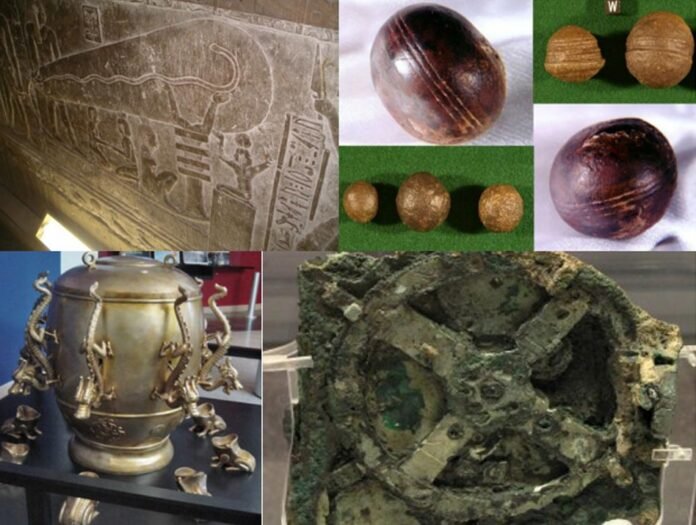A thrift shop in Chilliwack, British Columbia, has unexpectedly become the center of an archaeological mystery after donating a collection of rings and medallions to Simon Fraser University (SFU). Researchers say the objects could date as far back as the medieval or even Roman era, raising both excitement and caution in the academic community.
Thrifty Boutique manager Sandy Parker described the donation as the most unusual she has seen in her 11 years at the store. Originally priced at just $30 each, the 11 rings and two medallions might instead hold centuries of history. Their journey into a thrift shop bin highlights how priceless objects—or convincing imitations—sometimes slip through unnoticed until a keen eye intervenes.
The turning point came when a patron identifying himself as an archaeologist spotted the items. He urged staff to reconsider their origins. Within days, the collection was transferred to SFU’s Museum of Archaeology and Ethnology. There, students and faculty will scrutinize the pieces in a new academic course designed to train future archaeologists not just in analysis but also in ethical dilemmas tied to antiquities.
First Impressions from Experts
Dr. Sabrina Higgins, an associate professor of archaeology at SFU, was the first to examine the items. Based on the decorations and craftsmanship, she believes the artifacts could date back to the fourth or fifth century. This period overlaps with the late Roman Empire, when jewelry often combined Christian motifs, intricate metalwork, and regional styles.
Still, Higgins is careful not to make premature claims. “Even if these are forgeries, they tell us something important about the market for antiquities,” she explained. Her caution reflects a broader issue: the circulation of counterfeit artifacts, which often infiltrate both museums and private collections. Students at SFU will be challenged to determine not only the materials and designs but also the historical contexts—or the motivations behind faking them.
From Thrift Store Shelf to University Course
The artifacts are now slated to become central teaching tools in a new course launching next fall. Students will conduct detailed analyses using microscopes, chemical testing, and comparative research with verified historical objects. The class will culminate in a public exhibition at SFU’s museum.
The exhibition will not simply display the objects but will also trace their journey from discovery to authentication. It will highlight the biographies of artifacts—where they come from, how they were used, and what their afterlives reveal about collectors and markets. Ethical questions will be central: What responsibilities do museums have when faced with uncertain provenance? How should communities balance curiosity with caution?
The Broader Antiquities Market
Experts note that fake or misattributed objects are far from rare. According to UNESCO, the global illicit trade in cultural property is valued in the billions of dollars each year. Many forgeries are sophisticated enough to fool trained specialists. For example, in 2017, the Museum of the Bible in Washington, D.C., revealed that its prized Dead Sea Scrolls fragments were all modern forgeries.
Canada itself has seen controversies around artifact authenticity. Scholars warn that any newly surfaced items—especially those without documented excavation records—must be treated with skepticism. In this light, the thrift store discovery becomes a teaching moment about the blurred lines between genuine heritage and imitation.
Why Fakes Persist
Even if the Chilliwack artifacts turn out not to be authentic, Higgins believes they remain valuable for education. Fakes persist because they satisfy demand. Collectors seek objects with historical gravitas, and sellers exploit that desire. Forgers have incentives to produce convincing replicas, especially when museums, private buyers, and even auction houses sometimes fail to ask enough questions about provenance.
Studying such objects helps students understand not only ancient craftsmanship but also modern human behavior. The psychology of authenticity—why we want to believe something is old and rare—becomes as significant as the artifact itself.
Community Reactions
For locals in Chilliwack, the find adds unexpected cultural weight to a small thrift shop. Parker, the store manager, said that while the items may no longer sit on her shelves, their new life at SFU excites her. “It’s nice to know they’ll help students learn, whether they’re real or not,” she said.
Community members expressed pride that something discovered in their town will soon form part of a major university course. Others wondered how many similar treasures might still be hidden in attics, basements, or donation bins.
Looking Ahead
The artifacts’ final verdict—authentic or forged—may take months of study. Scientific testing, combined with comparative analysis, will reveal whether the rings and medallions were crafted centuries ago or in more recent workshops. Either way, their role in education is secured.
The exhibition planned for SFU’s Museum of Archaeology and Ethnology will offer the public a chance to explore the process of archaeological investigation. Visitors will see not only the objects but also the tools and methods used to evaluate them. They will be invited to consider questions of authenticity, ethics, and the cultural fascination with the past.
The Chilliwack thrift store story thus becomes more than a quirky headline. It is a window into the complex world of archaeology, where discovery always walks hand in hand with doubt, and where even a possible fake can tell us something profound about human history—and our need to connect with it.
